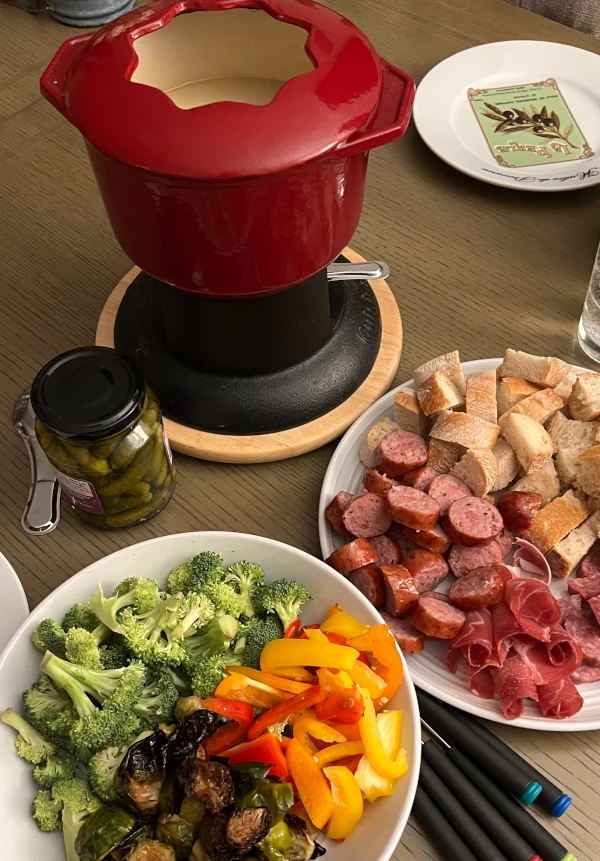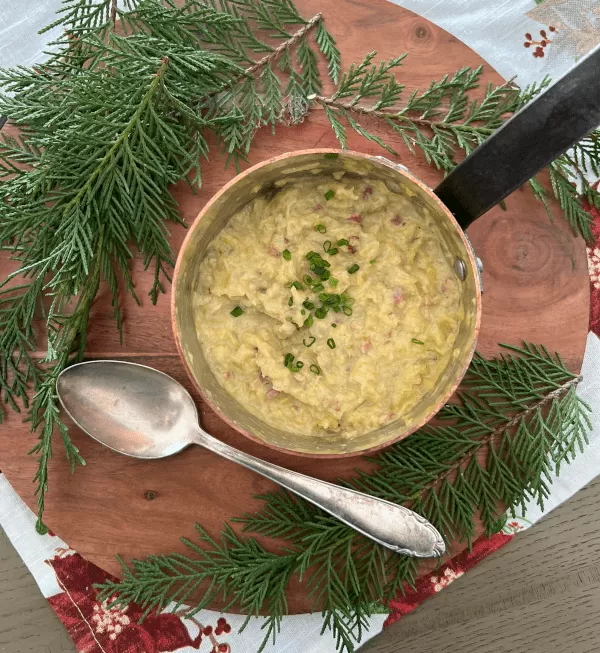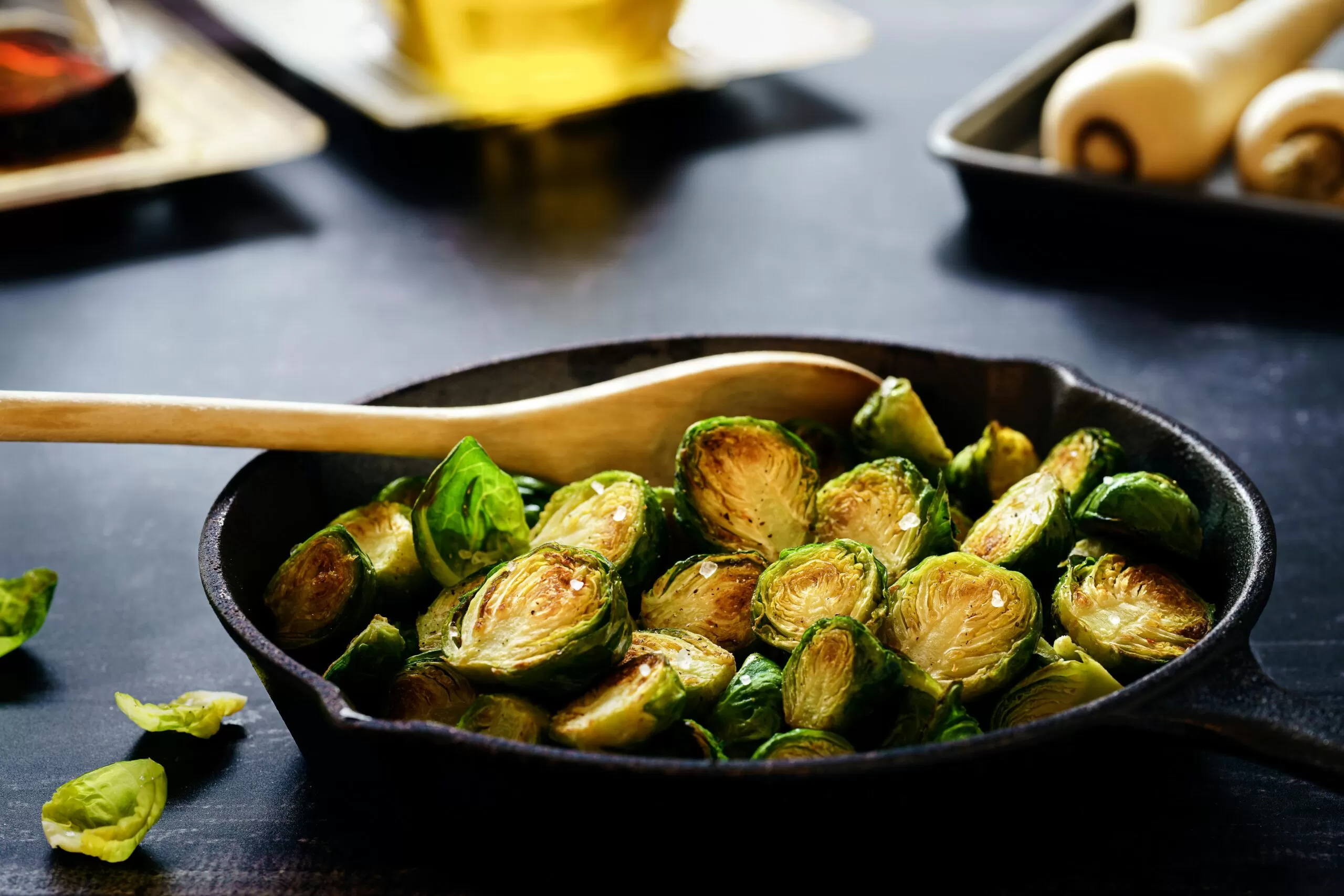My authentic spaetzle recipe is something that has evolved over many years of cooking German food professionally. My relationship with spaetzle is one that spans decades, rooted deeply in my personal history and culinary evolution. It all started in the outskirts of Reading, Pennsylvania, at a place that holds a special place in my heart—the Alpenhof Restaurant. As a young boy, I was exposed to the rich traditions of German cuisine, but it was the humble spaetzle that was always a highlight of our dinners. I can still remember that first plate of spaetzle like it was yesterday: tender, golden noodles, lightly buttered and sprinkled with fresh parsley. It was simple, yet to me, it was nothing short of extraordinary. That first bite was a revelation—the combination of soft, pillowy noodles with a slightly chewy texture was unlike anything I had ever tasted before. It wasn’t just food; it was an experience, one that planted the seeds for my future career as a chef.
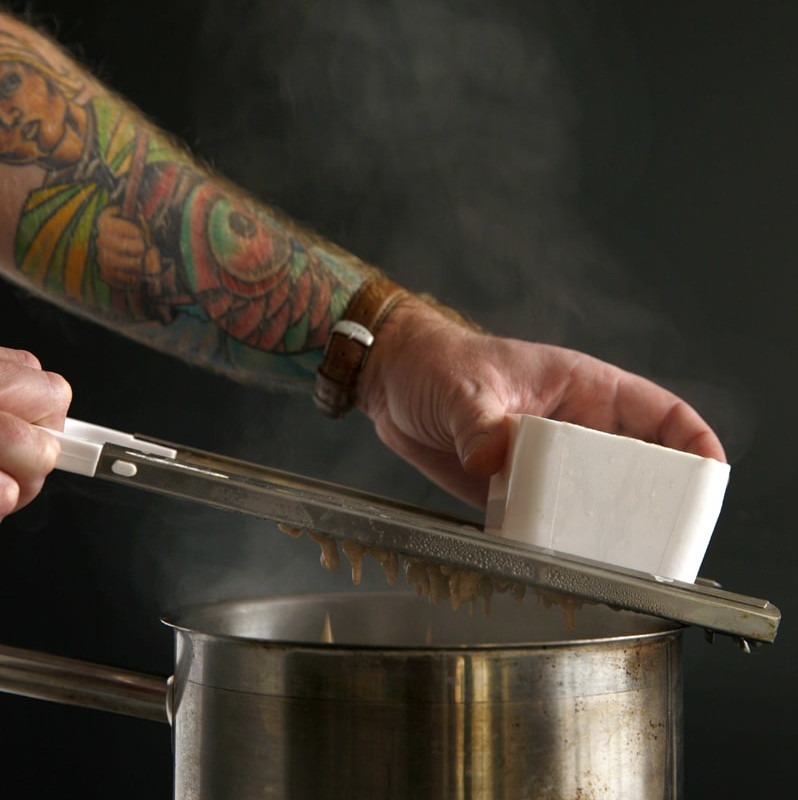
As I grew up, my exposure to spaetzle became more frequent, particularly at the Reading Liederkranz, a German cultural club that played a central role in my upbringing. The Liederkranz was more than just a gathering place; it was a community hub where the traditions of Germany were kept alive, especially through food. Spaetzle was a staple at many of the club’s events, often served as a side dish but always treated with the reverence it deserved. I would watch in awe as the older members of the club, who had learned the craft from their parents and grandparents, meticulously prepared spaetzle using the traditional board and scraper method. It was a labor of love, and I was fascinated by the precision and care that went into every batch.
These early experiences with spaetzle were formative, instilling in me a deep appreciation for this humble dish. It wasn’t just the taste that captivated me; it was the connection to my heritage, the sense of tradition, and the way food could bring people together. As I began my culinary career, spaetzle was always in the back of my mind. It became a personal challenge of sorts—to take what I had learned from those early days and refine it, to elevate this simple dish while staying true to its roots.
Over the years, I experimented with different recipes and techniques, always striving to recreate that perfect spaetzle from my childhood while adding my own touch. I tried various types of flour, adjusted the ratios of ingredients, and played with cooking times. But it wasn’t until I started incorporating semolina flour into the dough that I finally found what I was looking for. The semolina added a firmness to the noodles, giving them a satisfying bite and chew that I felt was missing from the traditional all-purpose flour recipes. It also gave the spaetzle a beautiful golden hue, reminiscent of the noodles I first fell in love with at the Alpenhof.
This discovery was a turning point for me. It was the moment when I realized that I could take something so deeply rooted in tradition and make it my own, without losing the essence of what made it special. The spaetzle I make today is a reflection of that journey—a perfect blend of tradition and innovation, a dish that honors the past while embracing the future.
Early Memories at the Reading Liederkranz
Growing up, the Reading Liederkranz was a central part of my life. It was a place where the community came together to celebrate German heritage, and food was always at the heart of these gatherings. Spaetzle was a staple on the menu, served alongside rich gravies, sauerbraten, and occasionally, just as a simple side. At the time, the spaetzle was made using traditional techniques—scraping the dough off a wooden board and into boiling water. It was labor-intensive, but the results were always worth it.
Refining the Technique
As I progressed in my culinary career, I began experimenting with different ingredients and techniques to refine the spaetzle I remembered so fondly. One of the most significant changes I made was incorporating semolina flour into the dough. This adjustment came after years of trial and error, searching for the perfect texture and flavor balance.
The addition of semolina flour brought a firmer bite and chew to the spaetzle, something I felt was missing from the traditional recipes. It also gave the noodles a beautiful, classic yellow color, reminiscent of the dishes I first encountered at the Alpenhof. This small change made a huge difference in achieving the perfect spaetzle, one that could stand up to rich sauces or be enjoyed on its own.
Ingredients for an Authentic Spaetzle Recipe
Here’s the recipe I’ve honed over the years, balancing tradition with a few modern twists:
- 1 cup (120g) semolina flour
- 1 cup (120g) all-purpose flour
- 1 teaspoon salt
- ¼ teaspoon nutmeg (optional, but it adds a warm, nutty flavor)
- 4 large eggs
- ½ cup (120ml) sparkling water (to keep the dough light and airy)
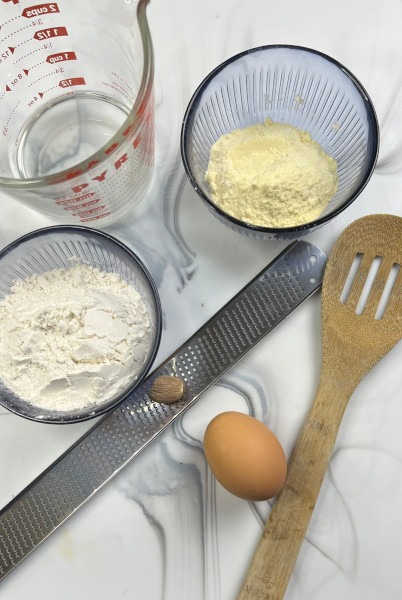
Step-by-Step Instructions
- Mix the Wet Ingredients:Use a large bowl and crack the eggs into it. Add the sparkling water. Using a wooden spoon or spatula, stir the ingredients together until you have a thick, sticky dough. The dough should be elastic enough to hold its shape but soft enough to press through a spaetzle maker.
- Mix the Dry Ingredients: Start by combining the semolina flour, all-purpose flour, salt, and nutmeg in a large mixing bowl. This blend of flours creates a dough that is both tender and slightly firm, perfect for holding its shape during cooking.
- Mix the Dough: Using the bowl that the wet ingredients are in, pour some of the dry ingredients into this and stir with a whisk. Continue adding the dry ingredients until it is all in the bowl. Using a wooden spoon or spatula, stir the ingredients together until you have a thick, sticky dough. The dough should be elastic enough to hold its shape but soft enough to press through a spaetzle maker.
- Boil the Water: Bring a large pot of salted water to a rolling boil. It’s essential to have the water boiling and ready before you begin shaping the spaetzle so they can cook immediately.
- Shape the Spaetzle: Over the years, I’ve moved from the traditional board-and-scraper method to using a spaetzle press. While the traditional method connects me to the past, the press makes the process quicker and more consistent. Fill the press with dough and press it directly over the boiling water, allowing the noodles to drop in.
- Cook the Spaetzle: The spaetzle cooks in just a few minutes. Once they float to the surface of the water, they’re done. Use a slotted spoon to remove them and transfer them to a colander to drain.
- Serve or Sauté: Spaetzle is versatile—you can serve it right away with your favorite sauce, or sauté it in a bit of butter for a golden, crispy finish.
Spaetzle vs. Knoepfle: Understanding the Difference
In my culinary journey, I’ve also worked with knoepfle, which are often confused with spaetzle. While both are delicious, there’s a subtle difference between them. Spaetzle, as I make it, is typically longer and more irregular in shape, almost like small dumplings or egg noodles. Knoepfle, on the other hand, are smaller and shaped more like buttons—more uniform and precise.
The difference in shape comes from the preparation method. Spaetzle is either scraped from a board or pressed through a spaetzle maker, giving it its characteristic irregular shape. Knoepfle is made using a different tool or technique, resulting in its distinct button-like appearance. Both are fantastic, but I’ve always preferred the rustic charm of spaetzle.
Incorporating Spaetzle into Dishes
Over the years, I’ve had the pleasure of incorporating spaetzle into various dishes, each one showcasing the versatility of these simple noodles. Here are a few of my favorites:
- Käsespätzle: This is my take on mac and cheese, where spaetzle is layered with grated cheese and fried onions, then baked until golden and bubbly. It’s the ultimate comfort food.
- Jägerspätzle: A hearty dish where spaetzle is served with a rich mushroom gravy. The noodles soak up the sauce, making each bite a savory delight.
- Sauerbraten with Spaetzle: The spaetzle is the perfect accompaniment to Sauerbraten, a traditional German pot roast. It absorbs the gravy beautifully, adding a satisfying texture to the dish.
- Spaetzle with Sautéed Greens: For a lighter option, I like to toss spaetzle with sautéed spinach or kale, garlic, and a sprinkle of Parmesan. It’s a quick and healthy meal.
I’ll provide links to these recipes soon.
The Tradition and the Press
While I have a deep respect for the traditional method of making spaetzle by hand, using a wooden board and scraper like this one, I’ve also come to appreciate the convenience and consistency of a spaetzle press. The press allows me to create perfect, uniform noodles quickly, which is especially important in a busy kitchen. This is the one I use the most. It’s a little expensive but it’s the best I’ve ever used.
Here are a few others that work just as well.
For the smaller Knoepfle use this one or this one.
That said, there’s something special about the ritual of making spaetzle the old-fashioned way, and I still do it from time to time, especially when I’m feeling nostalgic for the dishes of my childhood. But whether you choose the traditional method or opt for the modern convenience of a press, the result is the same: delicious, comforting spaetzle that brings people together around the table.
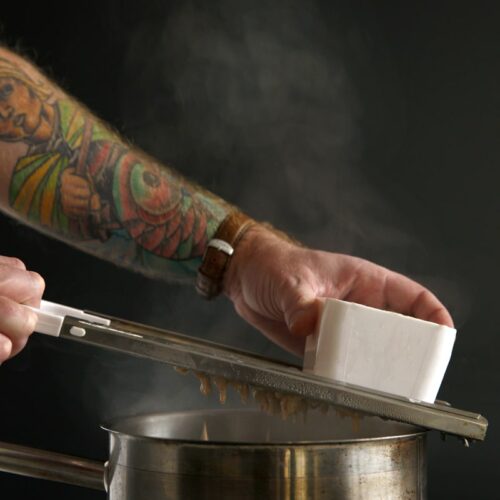
Spaetzle – Authentic German Noodles
Equipment
- Spaetzle Press
Ingredients
- 1 cup 125 g all-purpose flour
- 1 cup 150 g semolina flour
- 4 large eggs beaten
- 1/2 cup 120 ml mineral water (sparkling)
- 1 teaspoon salt
- 1/4 teaspoon ground nutmeg
Instructions
- In a large mixing bowl, combine the all-purpose flour, semolina flour, salt, and nutmeg.
- Make a well in the center of the dry ingredients and add the beaten eggs.
- Begin mixing from the center, gradually incorporating the flour into the eggs. Slowly add the mineral water, stirring continuously, until the batter is smooth and slightly elastic. The batter should be thick but a little pourable. The thicker the batter, the more chew the spaetzle will have.
To make traditional spaetzle using a press:
- Bring a large pot of salted water to a gentle boil.
- Place a spaetzle press over the pot and fill it with the batter.
- Press the batter through the holes into the boiling water. The spaetzle will drop into the water and cook in about 2-3 minutes, floating to the surface when done.
- Use a slotted spoon to remove the spaetzle and transfer them to a bowl or ice bath.
To make Knoepfle using a spaetzle maker:
- Bring a large pot of salted water to a gentle boil.
- Place the spaetzle maker over the pot and add a portion of the batter.
- Slide the hopper back and forth to drop small dumplings (Knoepfle) into the boiling water. Cook for 2-3 minutes, until they float to the surface.
- Use a slotted spoon to remove the Knoepfle and transfer them to a bowl.
Notes
Conclusion
Spaetzle has been a part of my culinary journey from the very beginning, and it continues to be a dish that I love to make and serve. Whether I’m preparing it for a special occasion at the Reading Liederkranz or simply making a batch at home, spaetzle always brings a sense of warmth and tradition to the meal.
The incorporation of semolina flour has been a game-changer for me, helping to achieve that perfect texture with a firmer bite and chew, along with the classic yellow color that makes spaetzle so visually appealing. And


